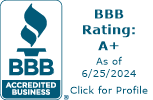Five kitties and two mothers
I’ve never seen this happen before. Maybe you have. Let me know.
My sister Jeanne’s cat gave birth to five adorable kittens. When they were just two days old, Jeanne’s other female cat decided to get into the nesting box. At first, the birth mother stared at her, but then she gracefully stood up, stepped out of the box, and let the surrogate mother babysit.
This pattern continued for weeks. What a great idea. Sunshine gave Precious breaks throughout the day. It always seemed to coincide with the kittens having just been fed and sleeping soundly. Precious would go for a walk and a stretch in the sun’s warmth.
Jeanne thoroughly enjoyed this scenario because she had the cats and kittens contained in her mud room. You could accomplish this also with a catio. That’s one of my favorite things to see our customers build—a catio.
Are you unfamiliar with Catios? Think of an enclosed screen porch or patio just for your cats. They can be big or small, elaborate or simple—I’ve seen both.
Any type of hexagonal netting works well for a Catio. Check out our different types.
Terry loves cats, so call her and let her help you decide which wire works best. @ 978-486-3116? (Tap to Call)
Kind Regards,
Debbie Page
CEO, Louis E. Page Inc–Woman-owned business and Family-owned since 1893. (It adds up to over 131 years owned and run by our family. Think about it: Nobody stays around in business that long without really supporting customers so they want to come back!)





